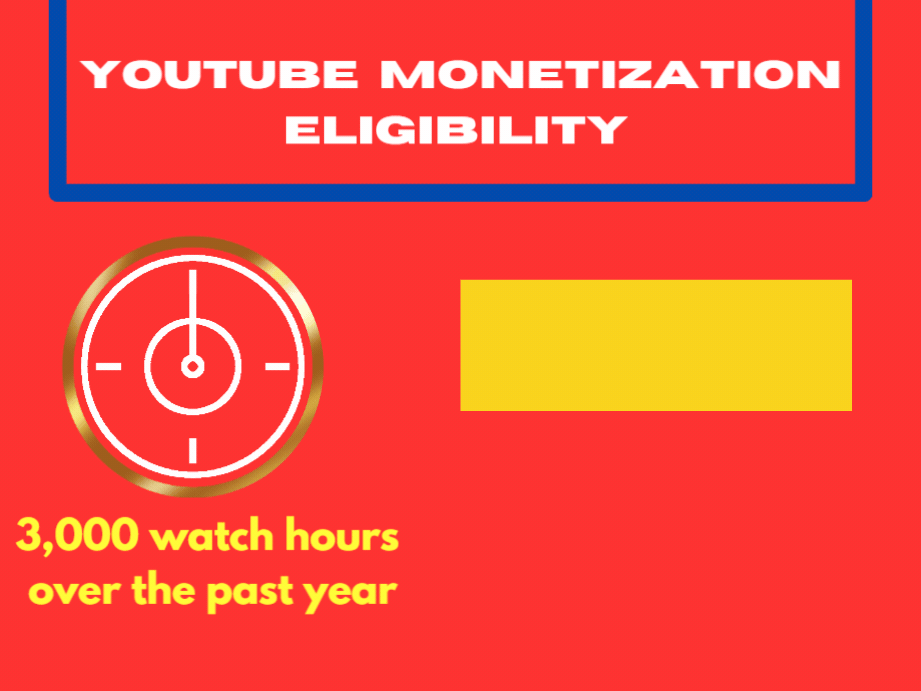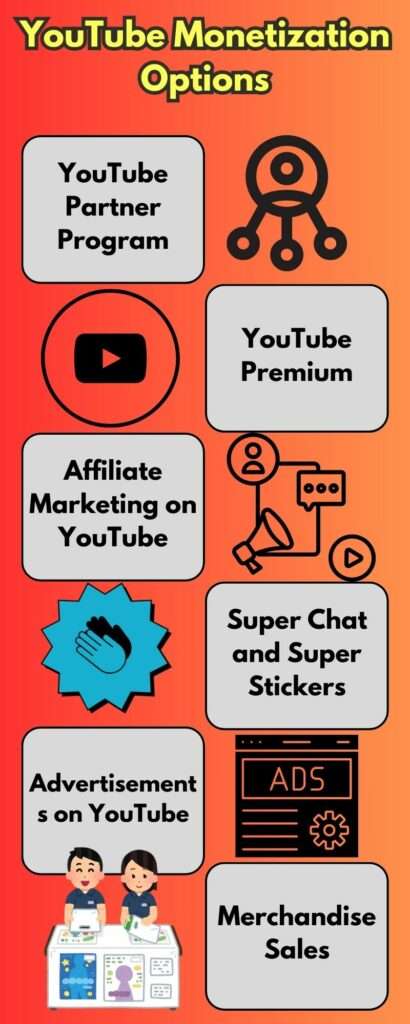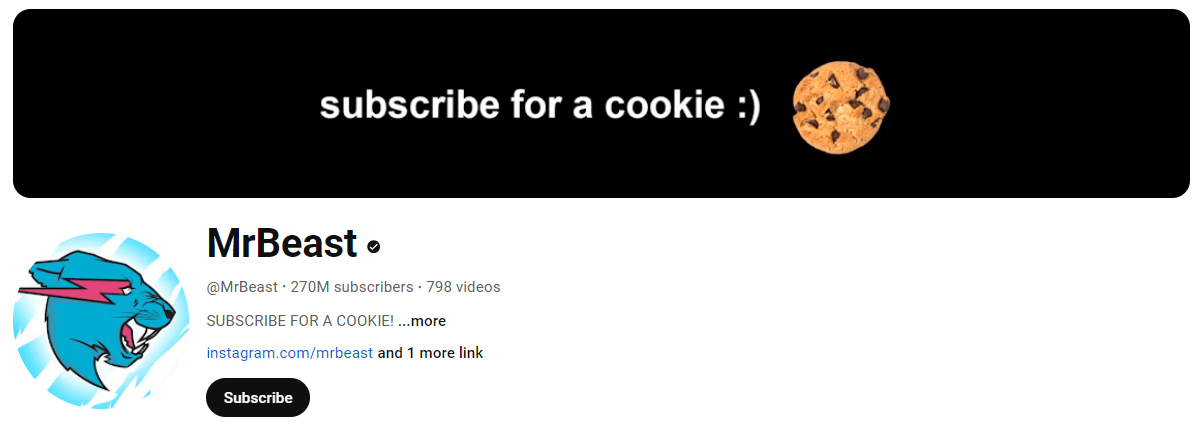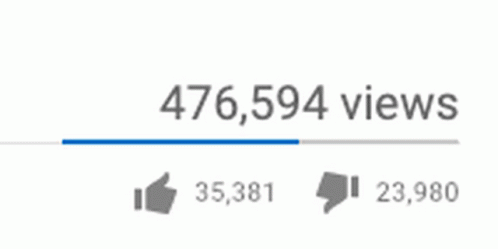Ever wondered how much YouTubers make? Understanding YouTube income per 1000 views, also known as RPM (Revenue Per Mille), is crucial. This metric reveals how much you can earn for every 1000 times your video is watched.
While the exact figure can vary, this guide will explore practical tips for boosting your earnings. Let’s discuss YouTube monetization to reach your content creation goals.
How Does YouTube Generate Revenue?
Understanding how YouTube generates revenue for creators is essential, whether you’re new to the platform or looking to optimize your channel’s performance. Let’s explore YouTube’s monetization rules.
1. Monetization Eligibility in 2024

In 2024, YouTube has updated its requirements for creators to join the YouTube Partner Program (YPP). To be eligible for monetization, creators now need to have
- At least 500 subscribers
- Minimum of 3,000 watch hours over the past year
Additionally, channels must have at least
- Three valid public uploads within the last 90 days
- Or it must have 3 million valid public Shorts views in the same timeframe
2. YouTube’s Monetization Policies
YouTube’s monetization guidelines have undergone a language update to clarify what constitutes Repetitious and Reused content, ensuring creators understand how to produce original content eligible for revenue generation.
As part of YPP, creators can monetize their content and gain access to exclusive tools, such as the Copyright Match Tool, to protect their intellectual property.
3. Diverse Revenue Streams
Regarding revenue, YouTube offers several options through which creators can earn money.
- Ad Revenues
- Channel Memberships
- Super Chat and Super Stickers
- YouTube Premium
- Affiliate Marketing
The YouTube income per 1,000 views, or CPM, can vary significantly based on these different revenue streams. Factors such as audience demographics, the type of content, and the engagement rate greatly influence potential earnings.
Understanding YouTube’s Monetization Options

Exploring the various monetization options YouTube offers can reveal insights into a channel’s potential income. This often prompts creators to ask, “How much money do you make on YouTube with 1000 subscribers?”
Let’s delve into the monetization options that can turn a subscriber base into a revenue stream.
1. YouTube Partner Program
The YouTube Partner Program (YPP) is your ticket to monetization on the platform. You’re eligible to apply once you hit the threshold of 500 subscribers and 3,000 watch hours within the past 12 months.
If accepted, you can access tools to monetize your videos through ads, channel memberships, and more.
Remember, hitting the subscriber count is just the start; you must maintain an active, engaged audience to generate income.
2. YouTube Premium
YouTube Premium is a subscription service that offers its users an ad-free experience. As a creator, you benefit from YouTube Premium by sharing the subscription fees. The more Premium subscribers watch your content, the more you can earn.
This can be an excellent way to supplement your income, as it’s not based on ads and, therefore, isn’t affected by ad blockers.
3. Affiliate Marketing on YouTube
Affiliate marketing allows you to earn a commission for promoting products or services. You can include affiliate links in your video descriptions. When a viewer clicks on one of these links and makes a purchase, you receive a percentage of the sale.
It’s a powerful way to leverage your audience and generate income, especially if you can offer products that align with your content and audience interests.
4. Super Chat and Super Stickers
Live streaming is a dynamic way to connect with your audience, and it can also be profitable, especially with Super Chat and Super Stickers.
These features enable viewers to purchase chat messages that stand out or fun stickers during your live streams. They’re a way for fans to show their support and for creators to earn revenue directly from their live streams.
5. Advertisements on YouTube
Ads are the most recognized form of YouTube monetization. Once you’re a part of YPP, ads can be placed before, during, or after your videos, and you earn money based on views and clicks.
The type of ads displayed, the engagement of your audience, and the overall demand for ad space on YouTube all factor into how much you can earn from ad revenue.
6. Product Placements and Merchandise Sales
Product placement involves featuring a brand’s product directly in your content. It’s a direct form of advertising that can be lucrative if your audience demographics align with the brand’s target market.
Selling merchandise related to your brand or content can also create significant revenue streams. From custom t-shirts to mugs, merchandise allows your most dedicated viewers to support you while getting something tangible.
Understanding and utilizing these monetization options effectively can help you maximize your earnings on YouTube. With a strategic approach, even channels with 1000 subscribers can start to see meaningful income, growing alongside their audience.
Examples of Successful YouTube Channels and Their Earning
The platform’s potential for profitability can be glimpsed through the success stories of various YouTubers. Understanding “how much YouTube pays for 1000 views in the USA” can vary significantly, but we can get a sense of the earning potential by examining successful channels.

1. Influencer Marketing Platforms and Influencers
Successful YouTubers leverage influencer marketing platforms to connect with brands for sponsored content deals. These deals can involve product placements, video collaborations, or exclusive content creation.
Earnings from such partnerships can significantly increase a channel’s overall income, potentially exceeding what they might earn through traditional metrics.
A Case Study: MrBeast

This popular YouTuber, known for his elaborate stunts and challenges, is a prime example of influencer marketing success.
While his exact earnings are not publicly available, it’s safe to assume sponsored content deals from major brands contribute significantly to his income, potentially outweighing revenue from traditional ads per view.
Jake Paul: A Case Study with Multiple Revenue Streams

Jake Paul, a controversial yet undeniably successful YouTuber, provides a clear example of how lucrative the platform can be.
He has over 20 million subscribers. His income likely comes from a combination of sources:
- Ad Revenue: While exact figures are unknown, with billions of views across his channels, he likely earns a substantial amount from traditional ads displayed on his videos.
- Boxing Matches: Paul’s venture into professional boxing has generated significant pay-per-view revenue, further diversifying his income streams.
- Merchandise Sales: Many successful YouTubers, including Paul, capitalize on their audience by selling branded merchandise like clothing and accessories.
The Rise of YouTube Shorts

The introduction of YouTube Shorts, a short-form video format similar to TikTok, offers creators a new avenue for engagement and potential income. Although monetization for Shorts is still evolving, it presents future possibilities for earning beyond traditional video views.
Exclusive Content for Premium Subscribers
Some creators offer exclusive content, like behind-the-scenes footage or early access to videos, to viewers who subscribe to YouTube Premium. This provides an additional revenue stream that isn’t reliant on individual video views.
It’s important to remember that success on YouTube comes in many forms. Some creators focus on building a loyal community and exploring various income streams. The key takeaway is understanding the diverse revenue options available and tailoring your strategy to your goals.
Remember: Specific earnings for individual creators are often confidential. However, by examining successful channels and their income sources, we gain valuable insights into how creators leverage YouTube’s monetization system to build sustainable careers.
How to Maximize Your YouTube Income per 1000 Views: Strategies for Growth
While the specific amount YouTube pays per 1000 views (RPM) can vary, there are definite strategies you can implement to increase your earning potential.

Here are some key areas to focus on.
1. Creating Valuable Video Content for Your Target Audience
Know Your Niche
Identify a specific niche or topic that aligns with your interests and has a dedicated audience. This allows you to tailor your content to their needs and preferences, increasing engagement and attracting viewers likely to click on relevant ads.
High-Quality Production
Invest in good audio and video quality to enhance the viewing experience. This doesn’t require the most expensive equipment, but crisp visuals and clear sound go a long way in keeping viewers engaged.
Content Consistency
Develop a consistent upload schedule to keep your audience coming back for more. This builds anticipation and fosters a loyal community, which can translate into higher viewership and potentially a better YouTube income per 1000 views over time.
You can also read “How to Use YouTube Studio to Grow Your Channel” here.
2. Optimal Monetization Settings for Your YouTube Channel
Join the YouTube Partner Program (YPP)
This program allows you to enable ads on your videos and share revenue with YouTube. Ensure you meet the eligibility criteria and carefully review the program’s policies.
Optimize Ad Placement
YouTube offers tools to control where ads appear in your videos. Experiment with different placements to find the sweet spot that balances effective ad exposure with maintaining a positive viewing experience.
Track Your Analytics
YouTube Analytics provides valuable insights into your audience demographics, watch time, and revenue sources. Utilize this data to understand what content resonates with your viewers and optimize your strategy accordingly.
Read here: “Top Benefits of Social Media Monitoring and How to Leverage Them?”
3. Leveraging Multiple Income Streams and Passive Income
Affiliate Marketing
Partner with relevant brands and promote their products within your videos. You earn a commission when viewers purchase through your affiliate link.
Sponsorships and Brand Deals
Brands may approach you for sponsored content or product placements as your channel grows. This can be a lucrative way to diversify your income and potentially earn more than traditional YouTube income per 1,000 views.
Merchandise Sales
Create and sell branded merchandise, such as T-shirts, mugs, or phone cases, to your audience. This provides a passive income stream that capitalizes on your existing fanbase.
4. Maintaining a Loyal and Engaged Audience
Community Building
Foster a sense of community by interacting with your viewers in the comments section, hosting live streams, and responding to messages. This keeps them engaged and invested in your content, potentially leading to higher viewership and ultimately influencing your YouTube income per 1,000 views.
Promote Your Channel
Utilize social media platforms like Instagram or Twitter to promote your YouTube channel and drive viewers there. Consider collaborating with other YouTubers in your niche for cross-promotion opportunities.
Building a successful YouTube channel takes time, dedication, and a strategic approach. By focusing on creating valuable content, optimizing monetization, and fostering a loyal audience, you can position yourself to maximize your YouTube earnings and potentially turn your passion into a sustainable income source.
Common Mistakes That Can Hinder Your YouTube Income (and How to Avoid Them)

Maximizing your YouTube income per 1000 views involves creating content and avoiding common pitfalls. Here are some mistakes to watch out for if you want to optimize your earning potential, even when considering YouTube income per 1,000 views without ads.
1. Over-reliance on Ad Revenue and Neglecting Other Streams
Many creators fixate on the elusive YouTube income per 1000 views without ads but neglect the power of diversification.
While ad revenue is a significant factor, it’s not the way to succeed. Here’s how you can avoid this.
Explore Alternative Monetization Options
Consider offering exclusive content for subscribers through memberships, promoting products through affiliate marketing, or collaborating with brands for sponsored content. These options provide additional income streams that are not solely reliant on the number of views your videos receive.
Building a Sustainable Income Portfolio
Think of your YouTube income like a financial portfolio. The more diverse your income sources, the less vulnerable you are to fluctuations in ad rates or YouTube algorithm changes.
2. Inaccurate Expectations and Misunderstanding Actual Earnings
It’s important to have realistic expectations about YouTube income. Earning a substantial living solely through YouTube income per 1000 views can take time and dedication.
Do Your Research
Many online resources provide insights into typical YouTube income ranges. Remember, these are just estimates, and your actual earnings will vary depending on your niche, audience demographics, and content style.
Focus on Building a Loyal Audience
While high view counts are desirable, prioritize building a loyal, engaged audience who consistently interacts with your content. This dedicated following will likely support you through various means, ultimately leading to a more sustainable income.
3. Poor Monetization Strategies and Channel Optimization
Leaving money on the table is a surefire way to hinder your YouTube income potential. Here’s how to ensure you’re maximizing your earnings.
Join the YouTube Partner Program (YPP)
This program is crucial for enabling ads and accessing other monetization features on your channel.
Optimize Your Channel
Use keywords in titles, descriptions, and tags to improve search discoverability. A well-optimized channel increases the chances of viewers finding your content, leading to more views and potentially higher YouTube income per 1,000 views.
Track Your Analytics
Watch YouTube Analytics closely to understand your audience demographics, watch time, and revenue sources. This data empowers you to refine your strategy and optimize your content for better performance.
4. Lack of Consistent Posting Schedule and Engagement with Audience
The YouTube algorithm favors channels that consistently upload high-quality content and foster a sense of community. Here’s how to avoid falling into this pitfall
Maintain a Consistent Upload Schedule
Develop a realistic upload schedule that you can stick to. This helps keep your audience engaged and returning for more, potentially increasing your YouTube income per 1000 views in the long run.
Interact with Your Viewers
Respond to comments, answer questions, and participate in discussions. Building genuine connections with your viewers increases their loyalty and encourages them to support your channel through subscriptions, merchandise purchases, or simply by sharing your content.
By avoiding these common mistakes and implementing effective strategies, you can achieve the threshold of YouTube income per 1000 views with greater clarity and achieve your YouTube income goals.
Remember, success on YouTube is a marathon, not a sprint. Focus on creating valuable content, optimizing your channel, and building a loyal audience.
Conclusion
Understanding and optimizing your YouTube income per 1000 views is a complicated process involving more than attracting views.
It’s about creating engaging content that resonates with your target audience, diversifying your income streams, staying current with YouTube’s monetization policies, and engaging with your audience to build a loyal following.
But what’s a strategy without the right tools to execute it? SocialBu offers an all-in-one solution for managing your social media presence effectively.
Schedule your YouTube content, analyze performance metrics, and engage with your audience, all from a single dashboard. Sign up to SocialBu for free now.
FAQs
1. How much does 1,000 views make on YouTube?
The average YouTuber in the US earns around $10-30 per 1,000 views.
2. How much money for 1m views on YouTube?
The average YouTuber in the US earns around $10,000 – 30,000 per million views.
3. How much money is 10k views on YouTube?
The average YouTuber in the US earns around $100 – 300 per 10,000 views.
4. How much money is 100k views on YouTube?
The average YouTuber in the US earns around $1,000 – 3,000 per 100,000 views.
Important Note: It’s impossible to give an exact amount of views on YouTube because the income per 1,000 views (RPM) varies greatly.
However, this guide explores strategies to maximize your earnings and alternative income streams beyond ad revenue. Focus on creating valuable content and building a loyal audience for long-term success.







